At the end of the day
Oil on canvas, cm 120 x 170
With frame, cm 151 x 201
Signed in the lower right: "L.Roda"
The majestic canvas in question should be included in the prolific production of the Piedmontese painter Leonardo Roda (Racconigi, 1868- Turin, 1933), as attested by the signature affixed below right, known mainly for its rural and mountain landscapes. Born in Racconigi, in the province of Cuneo, Roda trained mostly as self-taught, despite a period in Turin at the studio of the artist and writer Marco Calderini (1850 - 1941), where he developed, on the example of the master, a pictorial style aimed at capturing the beauty and serenity of nature. His works often depicted large landscapes and scenes of rural life, with farmers working in the fields or quiet villages nestled in the hills. Roda knew how to make masterfully the grandeur of the snowcapped peaks, the lush valleys and the games of light and shadow on the rocky walls. He regularly exhibited his works in important Italian cities such as Milan, Turin, Genoa and Florence, participating in various exhibitions, including the Promotrici di Torino and the annual exhibitions at the Circolo degli Artisti until 1925, Thus gaining the appreciation of the public and critics. His style, while remaining faithful to the landscape tradition, showed a modern sensibility in the brushstroke and use of color. Passionate mountaineer and botanist often stayed in Valtournanche, in the Aosta Valley, bringing back on canvas the most characteristic views of the valley, in particular by painting the Matterhorn in every declination of period and light, performing numerous versions with small variations both in large format and as sketches from the fresh, fast and elegant drafts. Great friend of the Ligurian writer and journalist Edmondo De Amicis (1846 - 1908),who commemorated him in the magazine "Aosta" of the provincial administration of the valley, he often traveled along the Ligurian Riviera, which ran from east to west often stopping in beloved Bordighera, and arriving at the Côte d'Azur (Between Celle and Albisola, 1899, Côte d'Azur, 1907). Today his works are preserved in important Italian collections, such as Preludio d'Inverno, formerly owned by the Istituto Bancario Italiano, Now kept in the art collections of the Cariplo Foundation and another painting at the Museum Gaffoglio of Rapallo. He died in Turin in 1933.
The canvas presented here, entitled A day finished, showing a group of farmers on horseback intent to return after a hard day of work in the fields while in the background stand the smoky chimneys symbol of the new industrialized city that advances, can be compared iconographically and ideologically with Il Quarto Stato by Giuseppe Pellizza da Volpedo (1901, Galleria d'Arte Moderna di Milano), thus representing a real social and political manifesto, An icon of the peasant and working class of the late nineteenth and early twentieth century. Italy at the turn of the century was, in fact, a country crossed by deep social and economic transformations. Industrialization, although still limited to some areas, had created an urban proletariat in often miserable conditions, with exhausting working hours and low wages. At the same time, in the countryside, masses of peasants were fighting against poverty and landlordism, while socialist and anarchist ideas spread rapidly, Fuelling strikes and demands for better living conditions and recognition of workers' rights. Roda, as well as Pelizza da Volpedo, deeply sensitive to the social issues of his time and influenced by socialist thought,felt the urgency of representing this nascent political and social force within this canvas, testimony to a new class of emerging conscious workers. The composition of the painting is powerful and symbolic: the compact group of men and women who are advancing on horseback towards the viewer is flooded by a sunset light that symbolizes hope for a future of redemption. The faces are serious and determined, but not aggressive; there are no weapons or signs of violence, but only the strength of the number and awareness of a unit found.
From a formal point of view his works are inscribed in the current verista, demonstrating a great commitment to represent the world in an authentic way and not idealized through brushstrokes corpose and fast: Even in his lyrical interpretation of the landscape, Roda strives to make the concreteness of the figures of the proletariat, subtracted from any rhetoric, the materiality of the earth and the truthfulness of light. Remembered mostly as a painter of landscapes, this work reveals a deep and rooted connection of the artist with the Italian territory, as well as a sincere observation of the true and present social sensitivity that make, In fact, the canvas is a rare testimony of the imminent industrialization.





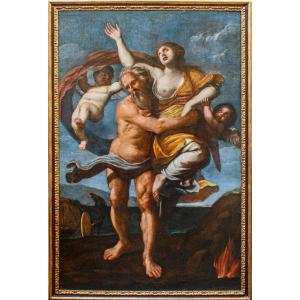


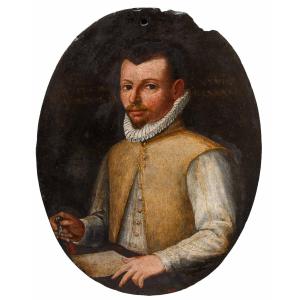





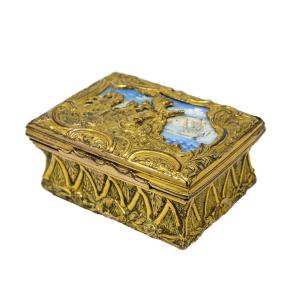


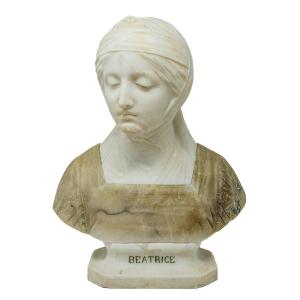


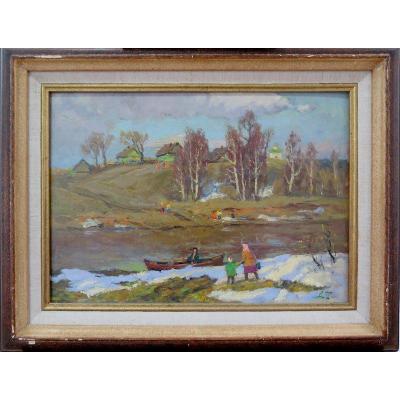
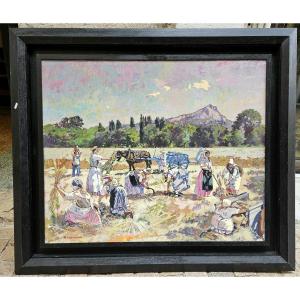
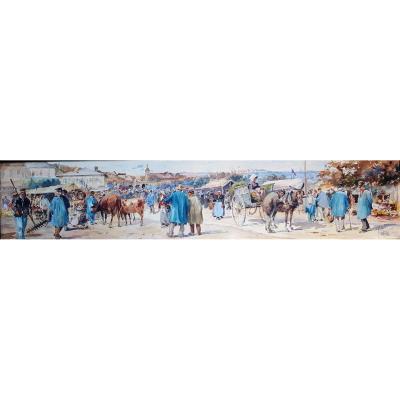





 Le Magazine de PROANTIC
Le Magazine de PROANTIC TRÉSORS Magazine
TRÉSORS Magazine Rivista Artiquariato
Rivista Artiquariato